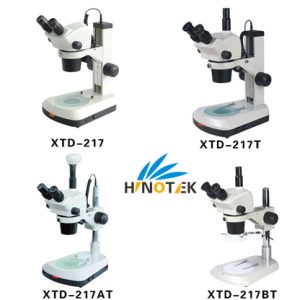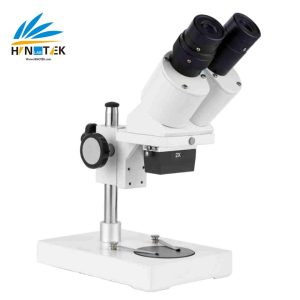With a wide variety of configurations, features, and price points available, selecting the ideal stereo microscope requires careful consideration of your specific needs. This guide will walk you through the key factors to ensure you choose the best stereo microscope for your application, whether for resale or direct use.
The most critical step is understanding the primary use case. Consider:
• Type of Samples: Are you inspecting circuit boards, dissecting biological specimens, examining metal parts, sorting small organisms, viewing gemstones, or repairing intricate items?
• Required Tasks: Is it primarily for observation, detailed inspection, rework (like soldering), quality control documentation, measurement, sample manipulation, or teaching?
• Sample Characteristics: Are your samples large or small, opaque or translucent, reflective or dull? Do you need to see inside crevices or holes?
• Environment: Where will the microscope be used? (e.g., production line, research lab, classroom, field work?)
Your application dictates the necessary magnification range, field of view, working distance, illumination type, and stand configuration.
• Type of Samples: Are you inspecting circuit boards, dissecting biological specimens, examining metal parts, sorting small organisms, viewing gemstones, or repairing intricate items?
• Required Tasks: Is it primarily for observation, detailed inspection, rework (like soldering), quality control documentation, measurement, sample manipulation, or teaching?
• Sample Characteristics: Are your samples large or small, opaque or translucent, reflective or dull? Do you need to see inside crevices or holes?
• Environment: Where will the microscope be used? (e.g., production line, research lab, classroom, field work?)
Your application dictates the necessary magnification range, field of view, working distance, illumination type, and stand configuration.
Once you know your application, evaluate these key technical aspects:
1. Magnification & Zoom
• Magnification Range: Stereo microscopes typically range from 2x to 100x. Determine the minimum and maximum magnification you’ll realistically need. Don’t assume more is always better; usability within your required range is key.
• Zoom Type:
o Fixed/Dual Power: Offers two distinct magnification levels (e.g., 10x and 30x, or 20x and 40x). Simple, cost-effective, good for repetitive tasks.
o Continuous Zoom: Allows smooth magnification changes across a range (e.g., 7x to 45x, 10x to 80x). Highly flexible for examining samples at various levels of detail. A larger zoom range is beneficial for switching between an overview and fine details quickly
2. Working Distance
This is the space between the bottom of the objective lens and the focused sample. Stereo microscopes are valued for their typically long working distance, crucial for tasks requiring tools or hand manipulation under the scope. Ensure the working distance is sufficient for your application. Note that higher magnification objectives usually have shorter working distances.
3. Optical Quality & Depth of Field
• Optical System: Stereo microscopes primarily use the Greenough design (two separate, angled optical paths creating the 3D effect) or the Common Main Objective (CMO) design (parallel paths through a shared main objective, often more modular and suited for advanced accessories). While Greenough is common and cost-effective, CMO systems often offer higher optical performance.
• Image Quality: Look for clear, sharp images with good contrast and minimal color distortion (chromatic aberration). Higher-quality optics (e.g., Plan objectives) provide a flatter field of view edge-to-edge, important for imaging and measurement. Apochromatic correction offers the best color accuracy.
• Depth of Field: This refers to how much of the sample’s height appears in sharp focus simultaneously. Stereo microscopes naturally offer good depth of field, enhancing the 3D perception. There’s often a trade-off: higher resolution usually means shallower depth of field.
4. Illumination: Critical for Seeing Clearly
Proper lighting is essential. Stereo microscopes typically use:
• Reflected (Incident/Epi) Light: Shines down onto opaque samples. This is the most common type for stereo microscopy. Options include:
o LED Ring Lights: Provide bright, even, shadow-free illumination. Very popular.
o Gooseneck/Spot Lights: Offer flexible positioning for highlighting specific features or reducing glare.
o Coaxial Illumination: Light travels through the objective lens, ideal for flat, reflective surfaces (like wafers or polished metal).
• Transmitted Light: Shines up through translucent or transparent samples (like biological specimens or thin plastics) from the base. Many stands incorporate a transmitted light base.
• Light Source: LEDs are now standard – they are cool, energy-efficient, and have a long lifespan. Halogen was previously common but generates more heat.
• Quality: Good illumination should be bright, even across the field of view, and render colors accurately.
5. Stand Type: Matching Your Workspace
The stand supports the microscope head and determines how it interacts with your workspace:
• Post Stand (Pillar Stand): Simple, compact footprint, often includes transmitted light base. Good for smaller samples and basic tasks.
• Boom Stand (Single Arm, Double Arm, Ball-Bearing): Extends the microscope head over a larger area, ideal for bulky samples, working on large items (like circuit boards), or when needing maximum clearance.
• Articulated Arm Stand: Offers flexible positioning and can be swung out of the way when not in use .
• Track Stand: Provides smooth, precise vertical movement, often preferred for photography.
6. Ergonomics: Comfort for Productivity
If users spend significant time at the microscope, ergonomics are vital to prevent strain and fatigue :
• Adjustable Eye Tubes: Allow users of different heights to maintain a comfortable, upright posture. Variable inclination angles are helpful.
• Proper Height: Ensure the microscope height allows for relaxed shoulders and supported arms.
• Accessible Controls: Focus and zoom knobs should be easy to reach without awkward stretching.
7. Digital Imaging Needs
Consider if image or video capture is required for documentation, sharing, analysis, or teaching:
• Trinocular Port: Most common method – a third port specifically for mounting a microscope camera.
• Integrated Cameras/Screens: Some models come with built-in digital capabilities.
• Software: Check compatibility and features for measurement, annotation, etc.
1. Magnification & Zoom
• Magnification Range: Stereo microscopes typically range from 2x to 100x. Determine the minimum and maximum magnification you’ll realistically need. Don’t assume more is always better; usability within your required range is key.
• Zoom Type:
o Fixed/Dual Power: Offers two distinct magnification levels (e.g., 10x and 30x, or 20x and 40x). Simple, cost-effective, good for repetitive tasks.
o Continuous Zoom: Allows smooth magnification changes across a range (e.g., 7x to 45x, 10x to 80x). Highly flexible for examining samples at various levels of detail. A larger zoom range is beneficial for switching between an overview and fine details quickly
2. Working Distance
This is the space between the bottom of the objective lens and the focused sample. Stereo microscopes are valued for their typically long working distance, crucial for tasks requiring tools or hand manipulation under the scope. Ensure the working distance is sufficient for your application. Note that higher magnification objectives usually have shorter working distances.
3. Optical Quality & Depth of Field
• Optical System: Stereo microscopes primarily use the Greenough design (two separate, angled optical paths creating the 3D effect) or the Common Main Objective (CMO) design (parallel paths through a shared main objective, often more modular and suited for advanced accessories). While Greenough is common and cost-effective, CMO systems often offer higher optical performance.
• Image Quality: Look for clear, sharp images with good contrast and minimal color distortion (chromatic aberration). Higher-quality optics (e.g., Plan objectives) provide a flatter field of view edge-to-edge, important for imaging and measurement. Apochromatic correction offers the best color accuracy.
• Depth of Field: This refers to how much of the sample’s height appears in sharp focus simultaneously. Stereo microscopes naturally offer good depth of field, enhancing the 3D perception. There’s often a trade-off: higher resolution usually means shallower depth of field.
4. Illumination: Critical for Seeing Clearly
Proper lighting is essential. Stereo microscopes typically use:
• Reflected (Incident/Epi) Light: Shines down onto opaque samples. This is the most common type for stereo microscopy. Options include:
o LED Ring Lights: Provide bright, even, shadow-free illumination. Very popular.
o Gooseneck/Spot Lights: Offer flexible positioning for highlighting specific features or reducing glare.
o Coaxial Illumination: Light travels through the objective lens, ideal for flat, reflective surfaces (like wafers or polished metal).
• Transmitted Light: Shines up through translucent or transparent samples (like biological specimens or thin plastics) from the base. Many stands incorporate a transmitted light base.
• Light Source: LEDs are now standard – they are cool, energy-efficient, and have a long lifespan. Halogen was previously common but generates more heat.
• Quality: Good illumination should be bright, even across the field of view, and render colors accurately.
5. Stand Type: Matching Your Workspace
The stand supports the microscope head and determines how it interacts with your workspace:
• Post Stand (Pillar Stand): Simple, compact footprint, often includes transmitted light base. Good for smaller samples and basic tasks.
• Boom Stand (Single Arm, Double Arm, Ball-Bearing): Extends the microscope head over a larger area, ideal for bulky samples, working on large items (like circuit boards), or when needing maximum clearance.
• Articulated Arm Stand: Offers flexible positioning and can be swung out of the way when not in use .
• Track Stand: Provides smooth, precise vertical movement, often preferred for photography.
6. Ergonomics: Comfort for Productivity
If users spend significant time at the microscope, ergonomics are vital to prevent strain and fatigue :
• Adjustable Eye Tubes: Allow users of different heights to maintain a comfortable, upright posture. Variable inclination angles are helpful.
• Proper Height: Ensure the microscope height allows for relaxed shoulders and supported arms.
• Accessible Controls: Focus and zoom knobs should be easy to reach without awkward stretching.
7. Digital Imaging Needs
Consider if image or video capture is required for documentation, sharing, analysis, or teaching:
• Trinocular Port: Most common method – a third port specifically for mounting a microscope camera.
• Integrated Cameras/Screens: Some models come with built-in digital capabilities.
• Software: Check compatibility and features for measurement, annotation, etc.
• Users: How many people will use the scope? If shared, easily adjustable ergonomic features are important.
• Budget: Stereo microscopes range from basic educational models to advanced research/industrial systems. Define your budget range.
• Modularity & Upgrades: Consider if you might need to add accessories (different objectives, cameras, advanced lighting) later. Modular systems offer more flexibility.
• Portability: If the microscope needs to be moved frequently, consider more compact and lightweight designs.
• Budget: Stereo microscopes range from basic educational models to advanced research/industrial systems. Define your budget range.
• Modularity & Upgrades: Consider if you might need to add accessories (different objectives, cameras, advanced lighting) later. Modular systems offer more flexibility.
• Portability: If the microscope needs to be moved frequently, consider more compact and lightweight designs.
Choosing the right stereo microscope involves a clear understanding of your application, followed by a careful evaluation of magnification needs, optical quality, illumination methods, stand suitability, ergonomic factors, and budget constraints. By prioritizing the features most critical to your tasks – whether it’s the 3D view for dissection, the large working distance for assembly, or specific illumination for inspection – you can select a tool that enhances productivity and delivers reliable results for years to come.
As a leading exporter of laboratory instruments from China, HINOTEK GROUP LIMITED offer a wide selection of high-quality stereo microscopes suitable for distributors, importers, and diverse end-users globally. Explore our range or contact our specialists for expert assistance in finding the perfect stereo microscope solution.
As a leading exporter of laboratory instruments from China, HINOTEK GROUP LIMITED offer a wide selection of high-quality stereo microscopes suitable for distributors, importers, and diverse end-users globally. Explore our range or contact our specialists for expert assistance in finding the perfect stereo microscope solution.

























